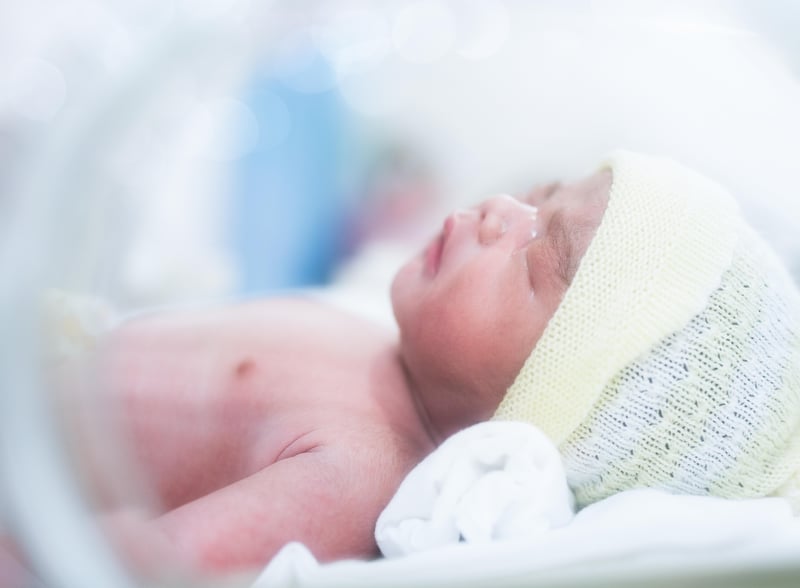Get Healthy!

- Alan Mozes
- Posted December 28, 2022
Babies in Danger From Ingesting Opioids Laced With Animal Tranquilizer
When a toddler or an infant accidentally ingests a prescription opioid medication, the immediate results can prove deadly, experts warn.
But another new worrisome dynamic is afoot in the United States, a just-published study reveals: pediatric poisonings from a particularly lethal combo -- a potent synthetic opioid known as fentanyl and a powerful veterinary sedative called xylazine.
"Infants or toddlers exposed to fentanyl are at risk of death,"even without the added threat of xylazine, said lead author Dr. Stephanie Deutsch, medical director of the Nemours CARE Program at Nemours Children's Health in Wilmington, Del.
In both children and adults, fentanyl quickly slows both breathing and heart rate while also triggering an altered mental state.
And within the world of overdose deaths, that risk is increasingly common, the new study authors pointed out. While fentanyl exposure alone accounted for 14% of overdose deaths in the United States in 2010, that figure shot up to almost 60% by 2017.
The good news: When children or adults with fentanyl poisoning are offered quick access to the opioid overdose reversal medication naloxone, it's often possible to prevent a potentially deadly cardiorespiratory arrest, Deutsch said.
The bad news: Xylazine is not an opioid, and there is no known antidote or medication to reverse its effects, she said.
While xylazine can provide significant pain relief and muscle relaxation when used to treat large animals (such as cattle and horses), an adult or child who is exposed to xylazine-opioid combos can experience severe respiratory and central nervous system depression and cardiovascular effects that do not respond to naloxone, Deutsch noted.
On the street, the xylazine-opioid combo is commonly sold as "anastesia de caballo" (horse tranquilizer), "tranq"or "sleep cut,"Deutsch and her Nemours colleague and co-author Dr. Allan De Jong noted.
The combo is increasingly sought-after by recreational drug users seeking a prolonged and euphoric high, in spite of the risks.
A database of fatal drug overdoses in 38 states and Washington, D.C., cited by Deutsch and De Jong shows that quest has been gaining traction.
Since 2019, adult overdose deaths involving opioids laced with xylazine -- a drug that's been around since 1962, but never approved for human use -- have been on the rise.
Opioid-xylazine poisoning among infants and toddlers are another matter entirely, the study authors stressed.
By definition, such children are unwitting victims, poisoned due to the carelessness or poor choices of adult caretakers who bring the deadly combo into the home.
Three recent cases cited in the new study emphasize the point in horrific detail.
One involved a 15-month-old boy who went into cardiac arrest after turning limp and blue in a car seat following exposure to the lethal drug pairing, presumably via his mother, who had nearly died a week earlier from a similar exposure.
Another involved a 7-month-old boy who collapsed after exposure to a parental stash.
And a third involved a 19-month-old boy who went into cardiac arrest while strapped into a car seat, likely because of parental exposure.
On the one hand, said Deutsch, "infants and toddlers are prone to accidental, exploratory ingestions and exposures based on their developmental curiosity and hand-mouth behaviors,"facilitated by ready proximity to a parental supply. Most pediatric fentanyl-xylazine overdoses are accidental, she added.
But there are also instances in which caregivers willfully administer the drug combo to an infant or child, in order "to modify behaviors."
In all three cases cited in the study, the children survived after emergency room treatment. "(But) some infants have died from xylazine exposure,"Deutsch noted.
So what can be done?
"Families and caregivers should always ensure that medications and any other objects that could be harmful to children should be kept in elevated locations -- preferably in locked cabinets,"said Dr. Danielle Orsagh-Yentis. She is an assistant professor in the department of pediatrics at Vanderbilt University in Nashville, Tenn., who reviewed the new study findings.
"If someone believes his or her child may have ingested a substance like this, he or she should contact the poison center immediately,"she added.
Deutsch agreed that caregivers should take steps to keep the opioid/tranquilizer out of children's reach.
From a broader perspective, Deutsch suggested that risk of pediatric poisoning could be reduced by making sure that adults who have a known substance abuse disorder are referred to treatment programs and get help to manage their addictions.
The findings were published online Dec. 23 in the journal Pediatrics.
More information
There's more about parental drug misuse and the risk it poses to children at the U.S. Substance Abuse and Mental Health Services Administration (SAMHSA).
SOURCES: Stephanie Anne Deutsch, MD, MS, FAAP, medical director, Nemours CARE Program, Nemours Children's Health, Wilmington, Del.; Danielle Orsagh-Yentis, MD, assistant professor, pediatrics, pediatric gastroenterology, hepatology, and nutrition, Vanderbilt University, Nashville, Tenn.; Pediatrics, Dec. 23, 2022, online







